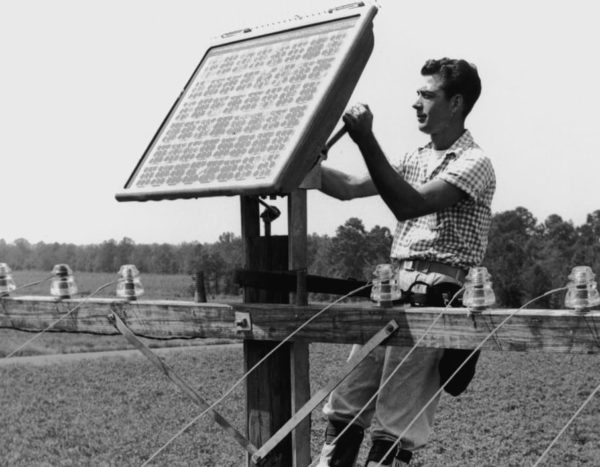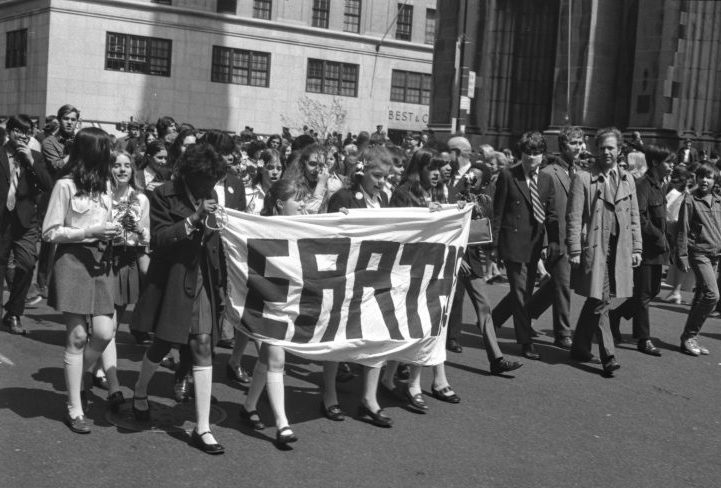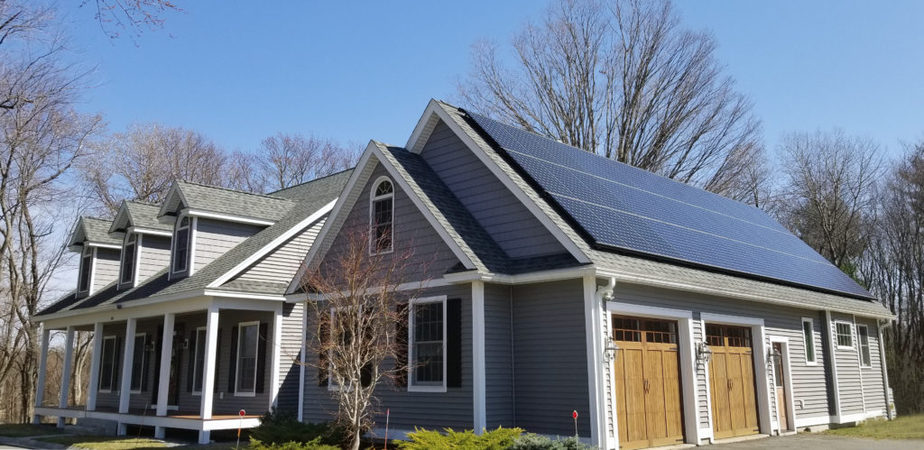Widespread use of solar panels has soared in recent decades, but the idea of harnessing the sun’s energy isn’t new at all. In fact, there is an extensive history of solar energy. Plants have been using solar energy since the beginning of time to create nutrients, and humans started taking advantage of the sun’s power centuries ago. The Ancient Greeks used solar power to heat homes and baths, and Leonardo Da Vinci even designed a solar system to heat water in the 15th century. Though solar is the most basic form of energy, it’s seen tremendous advancements over the years. Understanding the history of solar technology helps us see how it’s bound to stick around.
The First Solar Panels
 The first modern breakthrough in solar energy occurred in 1839 when French physicist Edmond Becquerel discovered the photovoltaic (PV) effect, a process that creates a voltage or electric current when exposed to light. Flash forward to 1883, and the next big leap in solar energy is made — New York inventor Charles Fritts created the first solar cell. This solar module consisted of a wide, thin selenium wafer covered by an even thinner sheet of gold. Its energy conversion rate ranged from 1 to 2 percent, which pales in comparison to today’s solar cells, which operate at an efficiency of 15 to 20 percent. Nonetheless, this was still a significant moment for solar energy and demonstrated the potential of clean power.
The first modern breakthrough in solar energy occurred in 1839 when French physicist Edmond Becquerel discovered the photovoltaic (PV) effect, a process that creates a voltage or electric current when exposed to light. Flash forward to 1883, and the next big leap in solar energy is made — New York inventor Charles Fritts created the first solar cell. This solar module consisted of a wide, thin selenium wafer covered by an even thinner sheet of gold. Its energy conversion rate ranged from 1 to 2 percent, which pales in comparison to today’s solar cells, which operate at an efficiency of 15 to 20 percent. Nonetheless, this was still a significant moment for solar energy and demonstrated the potential of clean power.
While selenium was the primary component of the solar cell Fritts invented, modern solar modules are constructed with silicon. In 1954, researchers at Bell Laboratories realized that semiconductors, such as silicon, were more efficient than selenium, so they began creating silicon solar cells. Energy conversion rates for these cells were 6%, significantly higher than than the previous selenium cells. The issue, however, was the price. The cells were costly to produce for large-scale applications. These photovoltaic cells were used in satellites and consumer electronics like calculators, but it was too expensive for many people to install on their roofs.

Environmental Activism Spurs Development
This changed in the 1970s when an energy crisis forced the government to consider ways to promote renewables. Congress then enacted the Solar Energy Research, Development and Demonstration Act of 1974 to promote the research and development of solar technologies. Additionally, the federal government began offering tax incentives to support the transition to solar and other renewable energy sources. At the same time, a major cultural shift occurred in the United States. The modern environmental movement sprung up, raising awareness of pollution and its consequences for people and the planet. This helped people learn about the benefits of solar over fossil fuels, and its popularity skyrocketed thanks to its benefit on the environment.
Solar Panels Today
Now, solar is more affordable than ever. Thanks to increased demand, a more efficient supply chain, and better resource allocation, solar is officially the cheapest electricity in history. As the affordability of solar has increased, so has the technology’s popularity. In 2019, the United States reached a total of 2 million solar installations, and as solar continues to evolve, this number is growing exponentially. People often think using solar energy is new but the idea of harnessing the sun’s power has endured for centuries, and solar panel technology has been advancing for decades. As we continue to face the environmental consequences of traditional energy sources, solar will become a necessary component of our future.
Learn More About Solar Power
Interested in learning more about solar? Our team can answer any question you have about solar energy, so you can see firsthand why it’s become so popular.